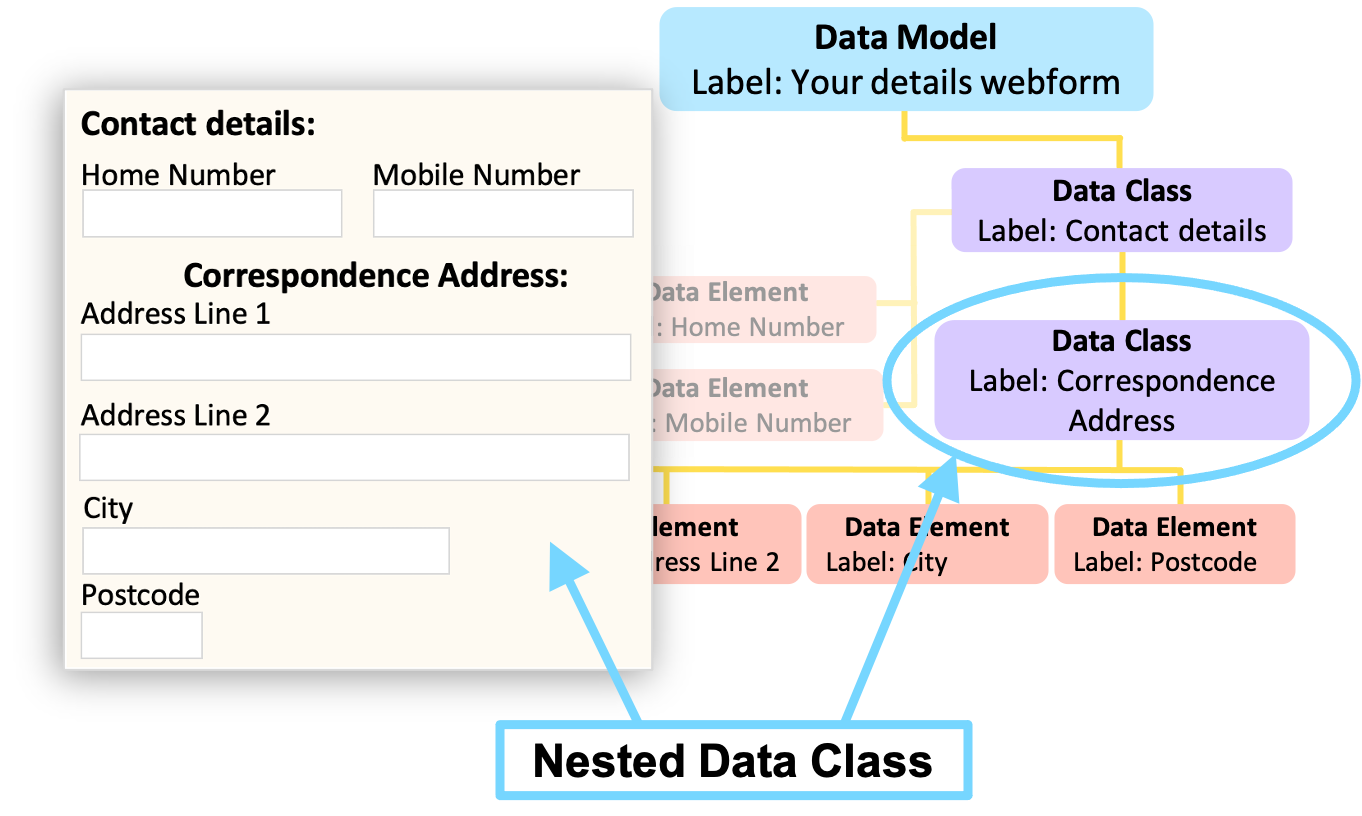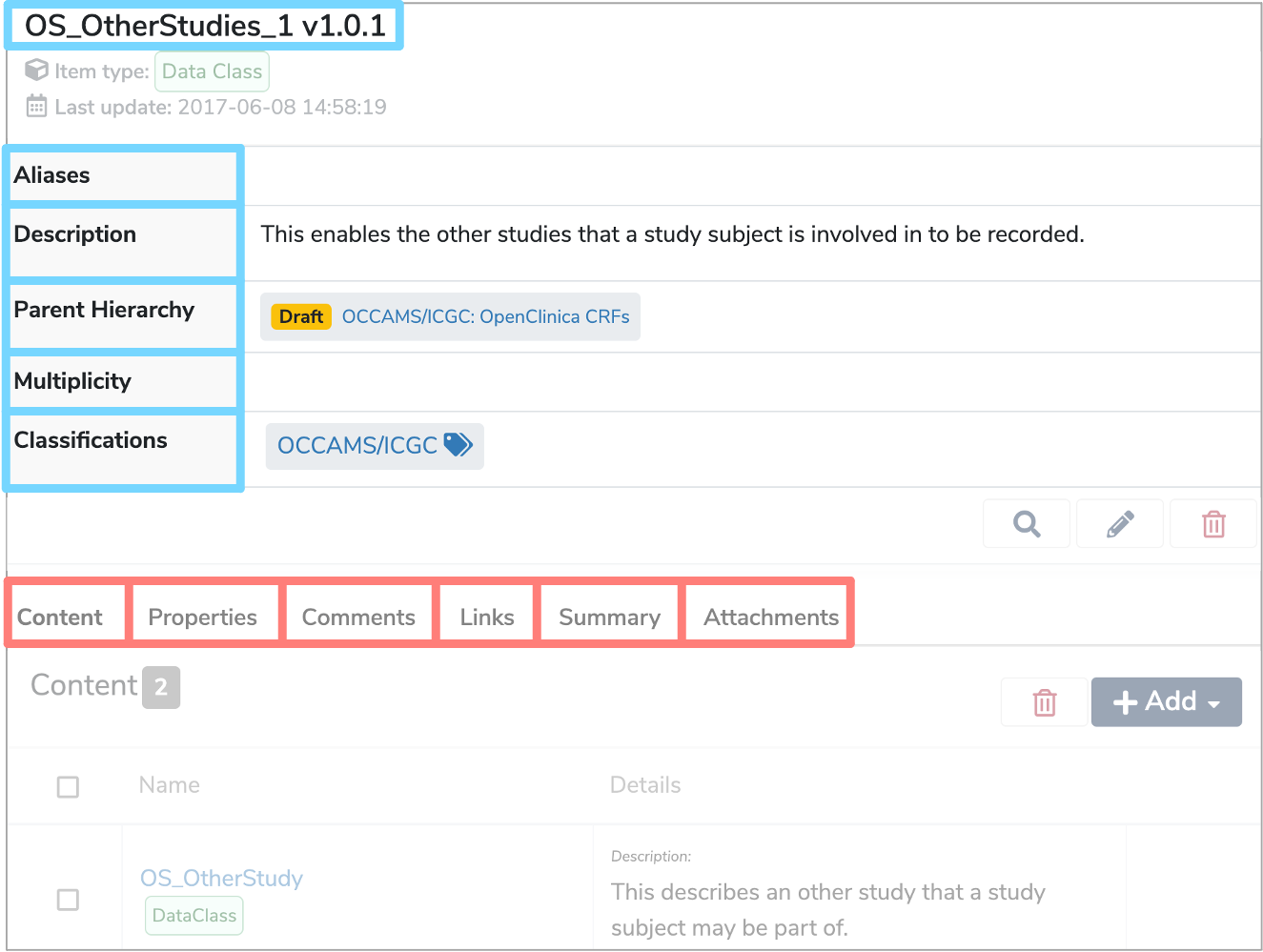Data Class
What is a Data Class?¶
A Data Class is a collection of data, also known as Data Elements, that are related to each other in some way. For example, each Data Element could appear in the same table of a database, or the same section within a form.
How are Data Classes used?¶
Data Classes are the building blocks of a Data Model. Within each Data Class lies several Data Elements and these are the descriptions of an individual field, variable, column or property.
You can also have a Data Class within a Data Class, known as a Nested Data Class, which can be a useful way of managing complex sets of data. There is no limit on the number of Nested Data Classes you can include.
For example, in a webform, there may be a section called 'Contact details', which would be one Data Class. Within that section however, there may be another Data Class labelled 'Correspondence Address'. This would be a Nested Data Class.

Each Data Class has a:
-
Label
This is the name of the Data Class which has to be unique within the Data Model or parent Data Class. -
Aliases
Alternative names that can help locate the Data Class when searched for. -
Description
A definition either written in HTML, Markdown, or plain text which explains the types of data items that are grouped together within the Data Class, as well as any contextual details. -
Parent Hierarchy
The parent of a Data Class can either be the Data Model itself, in which case it is described as a ‘top level data class’. Or, if it is a Nested Data Class, its parent Data Class. -
Multiplicity
This specifies the minimum and maximum number of times the Data Class appears within its parent.
Optional data may have a minimum Multiplicity of 0 and a maximum of 1, whereas mandatory data has a minimum Multiplicity of 1. Data which occurs any number of times is given by a Multiplicity of '*' (which is represented by '-1' internally). -
Classifications
These are effectively tags that you can apply to the Data Class.
The above are all shown within the details panel, when the Data Class is selected in the Model Tree.

Other characteristics are displayed in the tabs underneath the details panel, when the Data Class is selected in the Model Tree.
-
Content
This refers to the various Data Elements and Nested Data Classes within the selected Data Class. -
Properties
Arbitrary additional metadata about this Data Class. -
Comments
Any relevant comments or notes. -
Links
Semantic links between relevant Data Classes. -
Summary
Further metadata information on the nature of the Data Elements within the Data Class. This can include aggregate data such as the number of entries or distribution information as well as textual information detailing aspects like the geographic representation of the data set or the duration of collection. -
Attachments
Files can be added to provide additional information and context.